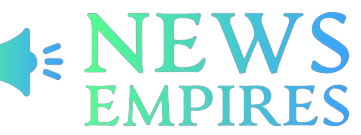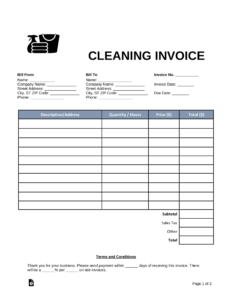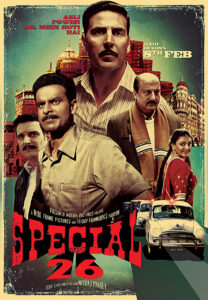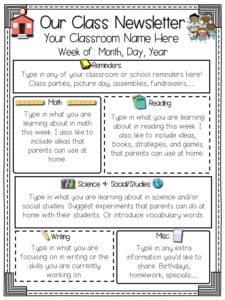Organizing an event is no small feat. Whether it’s a conference, seminar, or corporate gathering, a well-structured event agenda is crucial for its success. An event agenda outlines the schedule and activities that will take place during the event, ensuring that everything runs smoothly and efficiently. In this comprehensive guide, we will explore the key elements of an event agenda, its importance, and how to create one that engages and satisfies attendees.
1. Understanding the Purpose of an Event Agenda
Before diving into the details of creating an event agenda, it’s essential to understand its purpose. An event agenda serves several important functions:
- Provides a clear outline of the event’s schedule
- Ensures all necessary activities are accounted for
- Sets expectations for attendees
- Helps organizers allocate time effectively
- Keeps participants engaged and informed
By having a well-planned event agenda, organizers can maximize the value and impact of the event for all participants.
2. Key Components of an Event Agenda
An effective event agenda consists of several key components that work together to create a seamless experience for attendees. These components include:
2.1 Event Title and Theme
The event title and theme should be prominently displayed at the top of the agenda. This sets the tone and expectations for the event, helping participants understand its purpose and focus.
2.2 Date, Time, and Venue
Clearly stating the date, time, and venue of the event is crucial for attendees to plan their schedule accordingly. It’s important to provide detailed information, including the exact address and any additional instructions for reaching the venue.
2.3 Welcome and Introduction
The welcome and introduction section allows organizers to set the stage for the event. It should include a warm welcome, brief introductions of key individuals, and an overview of the event’s objectives and agenda.
2.4 Keynote Speakers and Presenters
Highlighting the keynote speakers and presenters is essential for generating excitement and interest among attendees. Include their names, titles, and a brief description of their expertise or topic of discussion.
2.5 Breakout Sessions and Workshops
If your event includes breakout sessions or workshops, clearly outline the topics, timings, and locations for each. This allows participants to choose the sessions that align with their interests or professional development goals.
2.6 Networking Opportunities
Networking is an integral part of any event. Include dedicated time slots for networking activities, such as coffee breaks, lunches, or evening receptions. This encourages attendees to connect and exchange ideas with fellow participants.
2.7 Q&A Sessions and Panel Discussions
Q&A sessions and panel discussions provide opportunities for attendees to engage with speakers and industry experts. Clearly indicate when these sessions will take place and encourage participants to prepare questions in advance.
2.8 Special Events or Activities
If your event includes special events or activities, such as product launches, exhibitions, or entertainment performances, highlight them in the agenda. This helps create anticipation among attendees and ensures they don’t miss out on any exciting moments.
2.9 Closing Remarks and Thank You
A well-structured event agenda should conclude with closing remarks and a heartfelt thank you to all participants, speakers, sponsors, and staff who contributed to the event’s success. This leaves attendees with a positive impression and sets the stage for future collaborations.
3. Tips for Creating an Engaging Event Agenda
Now that we’ve covered the key components of an event agenda, let’s explore some tips for creating an engaging and impactful agenda:
3.1 Know Your Audience
Understanding your target audience is crucial for designing an agenda that meets their needs and expectations. Consider their professional backgrounds, interests, and goals to ensure the agenda aligns with their preferences.
3.2 Balance Content and Breaks
A well-balanced event agenda strikes a balance between informative sessions and breaks. Avoid overwhelming participants with back-to-back sessions and incorporate sufficient breaks for networking, refreshments, and relaxation.
3.3 Incorporate Interactive Elements
Interactive elements, such as live polls, group discussions, or hands-on workshops, make the event more engaging and memorable. Incorporate these elements strategically throughout the agenda to keep attendees actively involved.
3.4 Allow for Flexibility
While having a structured agenda is important, it’s equally crucial to allow for flexibility. Unexpected situations or discussions may arise during the event, and having some buffer time in the agenda allows organizers to adapt and address these effectively.
3.5 Communicate the Agenda in Advance
Provide the event agenda to participants well in advance, preferably at least a week before the event. This gives attendees ample time to review the agenda, plan their schedule, and prepare any necessary materials or questions.
4. Case Study: Successful Event Agenda Implementation
To illustrate the impact of a well-planned event agenda, let’s look at a case study of a technology conference that achieved remarkable success through careful agenda design.
XYZ Tech Conference, a three-day event aimed at bringing together industry leaders and innovators, meticulously crafted their event agenda to maximize engagement and value for attendees. Here’s how they did it:
4.1 Thematic Structure
XYZ Tech Conference chose a thematic structure for their agenda, focusing on key technology trends shaping the industry. Each day of the conference was dedicated to a specific theme, such as artificial intelligence, cybersecurity, and blockchain.
By organizing the agenda thematically, attendees could easily identify and choose sessions aligned with their interests. This helped create a cohesive and immersive experience throughout the event.
4.2 Diverse Speaker Lineup
The conference organizers carefully curated a diverse lineup of speakers, ensuring representation from various sectors and perspectives. By featuring industry experts, thought leaders, and successful entrepreneurs, attendees had the opportunity to gain insights from a wide range of experiences.
The agenda clearly highlighted the names and backgrounds of each speaker, generating excitement and anticipation among participants.
4.3 Interactive Workshops
XYZ Tech Conference incorporated interactive workshops into their agenda, allowing participants to gain hands-on experience with emerging technologies. These workshops were led by industry experts and provided practical knowledge and skills that attendees could immediately apply in their work.
The workshops were strategically spread throughout the event, offering participants a chance to dive deeper into specific topics and engage in meaningful discussions with their peers.
4.4 Networking Opportunities
The event agenda included dedicated networking sessions, such as coffee breaks and a cocktail reception, to foster connections among attendees. XYZ Tech Conference recognized the importance of networking in building professional relationships and facilitated meaningful interactions.
By providing ample networking opportunities, participants could exchange ideas, collaborate on projects, and potentially form valuable partnerships.
5. The Importance of Evaluation and Feedback
An often overlooked but crucial aspect of event planning is evaluating the success of the event agenda. Collecting feedback from participants allows organizers to identify areas of improvement and make necessary adjustments for future events.
Here are some methods to collect feedback:
- Distribute post-event surveys to attendees
- Conduct interviews or focus groups with key stakeholders
- Analyze social media mentions and comments
- Review event analytics, such as attendance rates and session ratings
By actively seeking feedback, organizers can continuously enhance the event agenda and provide an even better experience for future participants.
Conclusion
An effective event agenda is the backbone of a successful event. By carefully planning and structuring the agenda, organizers can engage attendees, deliver valuable content, and create memorable experiences. Remember to consider the needs and preferences of your audience, incorporate interactive elements, and allow for flexibility. Regularly evaluate and seek feedback to continuously improve your event agenda, ensuring each event is better than the last. With a well-designed event agenda, you’ll be well on your way to organizing impactful and successful events.
FAQs
1. How far in advance should I create an event agenda?
It’s recommended to start creating your event agenda at least two to three months in advance. This allows sufficient time for thorough planning, coordination with speakers and presenters, and incorporating any necessary changes.
2. Should I include the exact timings for each session in the event agenda?
Yes, it’s crucial to include the exact timings for each session in the event agenda. This helps attendees plan their schedule and ensures a smooth flow of the event. Be sure to stick to the timings as much as possible to maintain the integrity of the agenda.
3. How can I ensure that my event agenda appeals to a diverse audience?
To ensure your event agenda appeals to a diverse audience, consider incorporating a variety of topics and formats. Include sessions that cater to different levels of expertise, from beginner to advanced. Additionally, try to feature speakers from various backgrounds and industries to provide diverse perspectives and insights. It’s also helpful to gather feedback from past attendees or conduct market research to understand the needs and interests of your target audience.
4. Can I make changes to the event agenda during the event?
While it’s best to stick to the planned agenda as much as possible, it’s important to allow for flexibility during the event. Unexpected situations may arise, such as technical difficulties or a speaker going over time. In such cases, be prepared to make necessary adjustments to ensure a seamless experience for attendees. Communicate any changes to participants in a timely manner to avoid confusion.
5. How can I ensure that participants are engaged throughout the event?
To keep participants engaged throughout the event, consider incorporating interactive elements into the agenda. This can include interactive workshops, panel discussions with audience participation, live polls, or networking activities. Encourage participants to ask questions and provide opportunities for them to connect with speakers and fellow attendees. Additionally, ensure that the agenda provides a good balance between informative sessions and breaks to avoid overwhelming participants.
Summary
Creating a compelling and well-structured event agenda is crucial for the success of any event. By understanding the purpose of an event agenda and incorporating key components such as the event title and theme, date, time, and venue, welcome and introduction, keynote speakers and presenters, breakout sessions and workshops, networking opportunities, Q&A sessions and panel discussions, special events or activities, and closing remarks and thank you, organizers can engage attendees and ensure a smooth flow of the event. By following tips such as knowing the audience, balancing content and breaks, incorporating interactive elements, allowing for flexibility, and communicating the agenda in advance, organizers can create an engaging and impactful event agenda. Evaluating and seeking feedback also play a crucial role in continuously improving the event agenda for future events. With a well-planned event agenda, organizers can create memorable experiences and deliver value to all participants.





